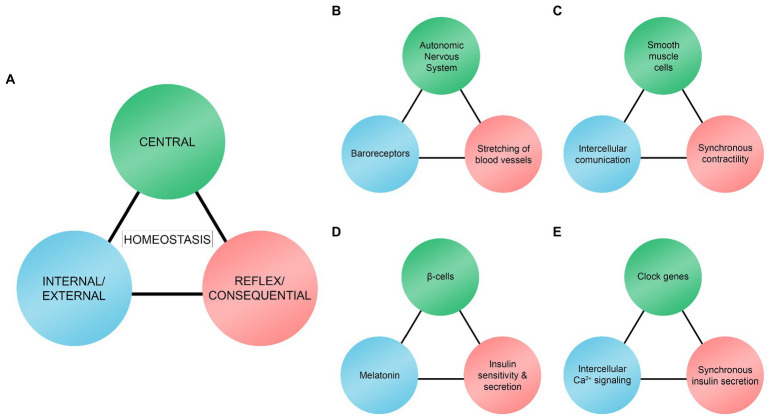Figure 2.
Trio model of central rhythms, internal/external rhythms, and reflex/consequential rhythms. (A) Homeostasis results from interactions between the trio rhythms. (B) Interaction between the autonomic nervous system, baroreceptors, and mechanical stretching of blood vessels to regulate and maintain blood pressure. (C) Interaction between smooth muscle cells, intercellular communication, and synchronous contractility of the cells to regulate and maintain rhythmic contractility of smooth muscle cells. (D) Interaction between β-cells, melatonin, and insulin sensitivity and secretion as one of the mechanisms to regulate and maintain glucose levels. (E) Interaction between clock genes, intracellular Ca2+ signaling, and synchronous insulin secretion as one of the mechanisms to regulate and maintain glucose levels.

